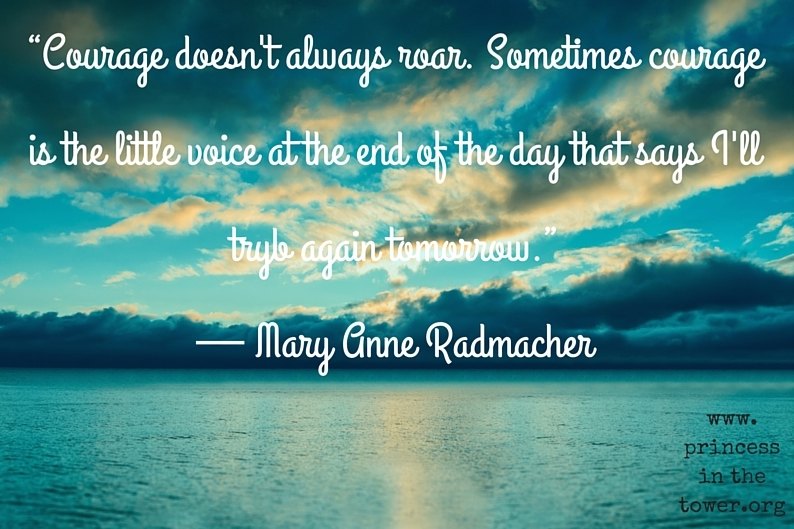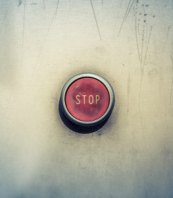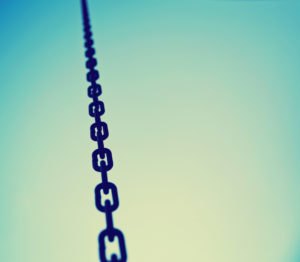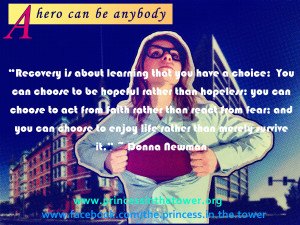A guide to coping with flare-ups, setbacks & extended flares of chronic pain—with tools to help you manage, recover & cope.
Finding ways to live with chronic pain — even though so much is altered by its constant presence — is a process we must learn again, and again. Extended flare-ups and setbacks, like the one I’ve been caught in these last six months, are without doubt the hardest part of living with the unpredictability of complex chronic illness and pain.
As it’s not only the flare, the exacerbated pain and symptoms, nor the stress of not knowing when it’ll calm or abate — lasting as they can from days to weeks to months — or even the increased disability, isolation, loneliness, guilt, and helplessness these times engender, but also the consequences — and the longer the flare, the greater those consequences.
Living with a condition that has no qualms in halting all in an instant — especially if denied enough attention, enough rest, and recovery — creates the most difficult feelings of all. These are of course fused with the most severe pain and greatest limitation. Just as chronic illness grief ebbs and flows — grieving the life before pain, and a life unlived because of pain and chronic illness — so too does our ability to manage and cope with these difficult times.
If Feeling Overwhelmed…
When overwhelmed by the many challenges of painful chronic illness, it can feel entirely paralysing, as if everything you once knew or defined yourself by has vanished — especially when immobilised by a flare, setback or extended flare-up. When stuck in bed in so much pain that even baring weight is fear-inducing, with allodynia translating even the most innocuous sound and stimuli to pain, it’s hard to think of anything at all beyond the moment, beyond that pain.
In these times, when feeling of an ebbing lack of control, if caught in thoughts that perpetuate the pain and losses you’ve endured, when depression is exacerbated by that ever-present, and weighty grief that also seems to come in waves as mercurial and unpredictable as the flares of pain, it’s far easier to focus on this moment, not the greater, grander picture. There’s just too much to consider, and pain already magnifies everything.
Instead pull your focus back to you, to this moment, and to how you’re holding yourself in this moment.
No matter how long you’ve lived with chronic pain, it’s easy to respond to an increase in its intensity by subconsciously holding ourselves tightly, especially when fused with any additional tension from fear or anxiety, which is of course heightened when pain’s especially fierce and without an endpoint in sight.
Close your eyes if it helps you focus, breathe deeply, and try to relax.
Next, consciously scan your body for any additional tension, gently allowing your body to loosen.
Soften your face, which is often an area of subconscious tension, especially when in pain, and relax as much as you can, returning your focus to the breath, to the moment.
You may like to then try the body scan, which is an inherently soothing, passive technique that is calming for you and pain levels, this 2-Minute Healing Technique To Relax Your Nervous System & Calm Pain or one of these many natural healing tools to calm and quell anxiety, and if pain is especially fervent, these natural ways to reduce chronic pain too.
One Minute Healing
Another way to feel less powerless in the face such unpredictability, pain, limitation and loss is to think of a single nourishing or comforting act, and then practice it for a single minute — only that:
-
One minute of soothing belly breathing.
-
One minute of visualisation that transports you to far kinder places.
-
One minute of calming acupressure, such as this healing sequence.
-
One minute of daily relaxation (see more here).
-
One minute of meditation.
-
One minute of stretching, gentle physical therapy or restorative yoga (see more here).
-
One minute of a gentle hand or foot massage.
-
One minute of pacing (depending on your baseline and the activity—see this guide on using pacing for pain management).
-
One minute on a project that makes you happy even if pain, disability & chronic illness thwarts you from completing as swiftly as you’d like.
Even when the pain is flaring so viciously you’re completely immobilised by it, helpless in the face of it and such testing circumstance, taking a moment to simply pause and practice a single, self-supportive act, which nurtures and nourishes you in this difficult time, can truly help you cope.
It helps break up the monotony of each excruciating day blending into the next, offering a welcome escape from a life so hampered by pain and disability — shifting your mind too kinder places, instead of the pain exacerbating feelings of being so thwarted and stuck or for your body ‘failing’ you.
As despite us knowing, at least on some level, that these circumstances are far beyond our control, we are so frequently hardest on ourselves. Also, as it is one minute, and not 10 or 20, you can practice this often, and stick to it without increasing or further flaring the pain. Not only is this kinder to your body but easier to make it a healing habit when done consistently.
Even though this is likely far from the life you envisaged, coping strategies such as a minute of visualisation or relaxation technique, give you a psychological release and mental escape, as well as physical relaxation and thus in this fusion, a little pain-relief too. It can be an entirely passive practice, so one you can still do when in a setback or flare.
When Flares Fuel Depression & Isolation
Living with painful and complex chronic illness is in itself already a full-time job, long before you add in the normal stress [and joys] of day-to-day living. Fuse this with limited mobility, such limited spoons too, which always thin during flare-ups, and disability’s limits on life — especially our finances that are so ironically depleted by the very treatments that are meant to help us — and it’s little wonder these are also the darkest times.
Depression, like chronic illness grief, and that of the pain too, comes in waves. It’s often insidious, subtle in its arrival but fierce in its decent. Worst of all, once in that place, it’s near impossible to do the very things you need to to help yourself escape it. Depression, quite literally, depresses your spirit, and when spirits are low, life looses all colour, its miracles fade to grey and all is tainted by the darkness.
When so much is at stake, so much of ourselves, who we are, and even what we do becomes unsteady on its feet, everything can feel equally precarious. When identity seems ripe for loss, uncertainty rife, and us feeling displaced by it all, by flared symptoms, disability and heightened pain that makes each moment expand with that pain, as housebound days seem to last forever, each blending into the next, we may turn quietly away in an effort to cope.
It is an understandable response, and a tendency that is even more pervasive in such testing times. “I never show what the aftermath is – I hibernate. I will withdraw rather than be with people. Because as pain is invisible and I don’t show it, it is confusing,” says chronic illness patient-advocate Kathleen Hogg, who found that despite needing to put these boundaries in place to cope with the pain, like so many living with invisible illness, she was judged for it.
“Even though, I found not being understood very painful and have been deeply hurt by some things said about me, I have to remember they just don’t get it. I hope they never do. I can’t take it personally. It isn’t their fault, they just have never experienced chronic invisible illness. Holding on to hurt can cause you more pain – physically and emotionally – so try to let it go. People handle things differently, and you must have empathy for their feelings; even though it might not be understandable.”
Healing Post-Flare Sadness with a Post-Flare Plan
“When your life feels directionless and you’re in the midst of a post-illness sadness, you have to turn your attention not to what you have missed out on or let fall through the cracks — but to what steps you’re going to take, not to get back to where you were, but to an even better place,” says chronic illness patient-advocate, Ilana Jacqueline.
“Recently I found myself in a two month long in-and-out of the hospital, on heavy doses of painkillers, kind of flare. And everything became unglued. I couldn’t work. I couldn’t plan for my wedding or my fiancé’s graduation party. I couldn’t keep up with my friends or care for my house, my appearance or relationships,” says Ilana Jacqueline.
“When the heavy waves that kept knocking me off my feet finally receded, I was left with the crumbled, disorganized pieces of my life with no clue how I was going to put it all back together and move forward.” Ilana says that making a plan saved her from the extreme overwhelm that comes when you’re offline from your life for an extended period of time—even a life already limited by chronic pain and illness.
This is now even more prevalent and stressful since the advent of so many inboxes, methods and means to communicate. It’s not only emails but so many spoon-banishing acts just to catch up with even those dearest to us — especially if, like me, you’re working with extremely limited use of both hands (the CRPS is still flared in every digit, though ever-hopeful it’ll return to intermittent use… if I keep pacing ;).
Instead of finding yourself pulled under this vast, oncoming wave, stop a moment. Take a deep breath. Trying to hold all this at once, to think of it all at once is a recipe for stress and even more overwhelm. Know that you’re only feeling this overwhelm because you care. If you didn’t care about others, about what you do, give, and your place and purpose in the world you wouldn’t feel overwhelmed.
One Step at a Time [& Baby Steps at That]
“You’re never going to walk out of a major flare, snap your fingers and watch your life magically put itself back together. It doesn’t happen overnight. It will take work and time. But you’ll get there,” says Ilana Jacqueline. “Having short and long term goals can be both motivating and stabilising. Making a plan saved me from the gut-punch of anxiety that hit me every time I looked at my overloaded inbox or piles upon piles of laundry.”
Remember to take the teeniest of steps, the tiniest of goals, and that trying to push forward and past pacing limits means recovery will take even longer. I know it is so hard to stop, to pace and rest, especially when longing to continue, filled with enthusiasm for a project or that yearning to live life, no matter how altered that life is by pain. In fact, sometimes resting is the hardest thing of all.
“Recognise a frantic pace cannot continue,” says Kathleen Hogg. “In any crisis, break it down. Make a list of what needs to be done, prioritise and work the list. Putting the situation into small manageable tasks, helps reduce stress which will lead to harsher pain. Focus on one thing at a time, let things go if they are too overwhelming for you. Take breaks and reassess as needed.”
Little tasks are not only less intimidating, easier to attain and therefore feel good about but also give you something to focus on, and that’s a powerful thing, especially in helping you escape a setback. “Set small, attainable goals. It can be anything from getting out of bed to learning something new. When your body allows, seek more opportunities within your capacity,” says Elisa Friedlander, licensed psychotherapist and CRPS warrior-advocate.
Reconnecting with Life After a Setback
Reintegrating yourself into the world after an extended period of absence, wherein you’ve been unable to connect with others, much less maintain your normal pain management — including vital relaxation — will have lead to a decrease in muscle mass, mobility and flexibility, increasing both pain levels and pain sensitivity, while making pacing limitations that were already slender, microscopic.
Relearning pacing again for every act after a period of immobility can be a frustrating and slow process. Finding your new baseline, the tiny increments that must be timed and tempered with recovery breaks, and increased so slowly, you’d be forgiven for giving up. Though a breach in these while recovering from a long flare can create the most tricky consequence of all—that of landing back in that place, that flare.
Though don’t give up, things can and will improve. You may need to be a little creative, patient and persistent too but your life can get better if you take it slowly, very slowly. “Two months of what was practically bed rest left me in a feeble state. I wasn’t going to lift weights the next day, but I could slowly start taking supplements, get massages and adjustments to wake up my muscles, and begin walking around the neighbourhood each day to increase my endurance. One small step at a time,” says Ilana Jacqueline.
-
Read more on pacing for pain management here, to find your baselines for each activity & always use a timer as it’s so easy to slip past our limits & pay for it later with even greater pain.
-
Try to do everything ‘little and often’, breaking down tasks into micro amounts; it is a very helpful way to conserve energy & reduce pain flares, as well as help you heal from setbacks.
-
Instead of basing your activity level on how you feel, that is, doing more when pain levels allow less when pain’s too severe, pacing involves basing your activity level on preset, reasonable goals – not on your level of pain.
-
Remember that with pacing, the slower you go, the faster you get there.
You Are Not Who You Were [& That’s OK]
Although our lives are so often already stripped to their barest bones with chronic illness and pain, when flared-up and able to do even less it’s hard not to compare our former, active and achieving selves with what we can do now but as Theodore Roosevelt once said, “Comparison is the thief of joy,” no matter the circumstance, and never a good idea whether you’re chronically ill or not.
“I think, perhaps many of us have trouble at this point. We look in the rearview mirror and we see what was, and what cannot be again. We see the new road that illness has taken us down, and while what has happened is change, we may see failure,” says blogger, podcaster, chronic illness patient-advocate and creator of The Chronically Awesome Foundation, Julianna Saphiro, who lives with EDS, Bipolar, Neuropathy, Osteoarthritis, Scoliosis, and Degenerative Disc Disorder.
“Setting a new course, charting a new path because we have been dealt an unexpected hand is not failure. Those who love us will not judge us. We must love one another. We must love ourselves, all of us, though often we are our own worst critics.” This is never more prevalent than when in or coming out of a flare or setback.
Although appreciating what you can do without comparison nor focusing only on what’s lost may not be easy, try to let go of self-criticism because its effect on your pain experience is immense. “Do not get lost in the past. Sometimes we can fixate on days past when we could do so much more and be so much more,” says writer and chronic illness patient-advocate, Nikki Albert.
“Yet, we cannot live as we once did, with the same lifestyle, ambitions and goals. To do so creates more suffering and stress as we cannot live up to the image of our past selves. Which then leads to guilt for not being what we once were, what society expects of us, what we believe our family needs of us. Instead, we must define our limitations and live a life suited to them.” Chronic Pain and illness thwarts so much.
Even when not caught in a flare there’s always this constant analysis, continuous planning, prioritising, pacing — but we must remember that though tedious, pacing can and does help us ultimately do more. Also that nothing is certain, that sometimes in spite of the best pain management, flares do happen. Equally however, that storms abate, and better days do come—no matter how farfetched that may currently seem.
Shift Your Expectations
“Instead of thinking satisfaction can only come from symptom relief and productivity from working or “doing,” expect these to show up in the form of good days or good moments. Use positive self-talk to shift your expectations,” suggests Elisa Friedlander. Do not be hard on yourself on top of the flare; you have to be on your own team.
“Instead of saying “I can hardly walk,” you might say, “Walking a little bit today was hard, but I moved my body and got to be in the sun,” says Elisa Friedlander. This helps shift our focus onto the good in the moment, to what is working, and as everyone with chronic pain knows, we must find and embrace these pockets of joy and healing, no matter how humble, for our ability to cope, as whatever we focus on has a way of expanding, eclipsing all else, and pain is all-encompassing enough.
Let Go of Guilt
You know it isn’t your fault. You know you’re doing all you can. You know in such trying circumstances as these, were it someone you loved, you’d be beaming with compassion for them. So why do we feel this guilt? “Guilt can be overwhelming. We have this idea that we ‘must’ be a certain way and we ‘should’ be able to do certain things. We all make assumptions about our self-worth and what it is to be a functioning member in the world,” says Nikki Albert.
Yet such assumptions can be destructive, such as, ‘I need to work full-time or I am worthless as a person. If I cannot work then I am a burden to my loved ones and society’, thus defining you very worth on a job. The guilt for not being able to meet our assumptions is powerful. We can believe we are letting down our employers, our co-workers and our family. Pushing ourselves to meet our self-imposed expectations can have horrible consequences, from depression, anxiety, suicidal ideation or actions.”
This can be compounded by the ebbing control which comes with an increase in pain and symptoms. We don’t want to stop or slow down, we don’t want to rest. But not resting when our body tells us to but our mind is longing to move, longing to live, means flares do become more frequent, and far more fervent too unless we slow down and pace, allowing our body to recover and CNS to calm.
This grand setback is still simmering away but I’ve at last microscopic limits instead of none, and this — as all who’ve started from scratch again with pacing, from nothing to 30 seconds and increasing only that each week, knows — its a slow, painful process in every sense as we want to live, to work, to see things and do things and connect with others. But guilt by definition is about not doing something when you could have, yet we still feel this despite being entirely thwarted in our being able to act.
“Guilt is not the problem; more often, our problem is the shame,” says Julianna Saphiro. “Shame comes from a deeper place, a place where we feel flawed or defective. When we feel defective, we feel unworthy. This belief is not uncommon in the chronic illness community. I know from my experience that I will often say that I feel guilty when, I am learning, what I am feeling is shame.”
It’s vital to remember that in spite of the messages of society, you are worthy and not defined only by the roles and work you do or did. “Work is not our identity; we are so much more. The personal qualities we brought to our jobs are what continue to make us whole and worthwhile,” says Elisa Friedlander. “Put work aside for now and take a look inside yourself. You’ll discover you never stopped being valuable.”
Make Your Surroundings as Calm as Possible
Chronic pain is always exacerbated by stressful situations and hectic environments. When that pain leads to an altered Central Nervous System (CNS) and central sensitization, hyperalgesia and allodynia mean movement, sounds, bright lights and previously harmless stimuli now cause a severe increase of pain — making a calm environment an essential part of managing that pain. CRPS is an example where the slightest seemingly innocuous sound translates to the fiercest pain.
Of course we can only control so much, especially when living with disability and pain, dependant on others for help and/or living with others but trying to keep your life and environment as soothing and calming as possible means your CNS will reflect that, be less reactive and repeatedly activated by this stimuli, and consequently less painful, helping you recover from the flare. Never feel bad about setting boundaries to manage pain and cope.
“I had to be very forceful about keeping the house limited in the number of people,” says Kathleen Hogg. “Too many people staying there or around – was too much for my system. Many didn’t understand that. They thought I was being difficult, but I really wasn’t trying to be, I just knew too much noise or activity would set off my Central Nervous System and I can’t get it back under control for days.”
Finding a Way to Vent
“We need to do something with all our intense emotions and fluctuating moods and finding a positive outlet is key. Venting or ranting in a journal is one thing, since once you have set those emotions and fustrations to paper it is a release and will reduce your stress,” says Nikki Albert.
“Another way is to find a hobby you are passionate about, whether it is writing, painting or scrapbooking. Support groups and online forums also help because then you are sharing, getting sympathy or coping tips from people that have the same issues, which can relieve that sense of isolation. Just knowing we are not alone is sometimes all we need.”
These difficult feelings may be as cyclical as the flares and pain but you can find a little peace with them, find ways to live well in spite of them, and strategies to help you manage and cope. “There is no one-size-fits-all. Cry, scream, yell if you have to. Talk to a friend or therapist. It doesn’t matter what you do — just do something! And then, at some point, it is important to try and live a new normal,” says psychologist Jennifer Martin, PsyD, who lives with RA & ulcerative colitis.
“Finding a new normal means weaving our way, however slowly, through the new challenges we face daily. Having a chronic condition, however painful, uncomfortable, horrible, scary and unfair, doesn’t mean you can’t be happy again. But in order to be happy it is important to mourn the loss of who you were and slowly put the pieces of your puzzle back together.”
Finding Freedom in Response
“Everything can be taken from a man but one thing: the last of the human freedoms—to choose one’s attitude in any given set of circumstances, to choose one’s own way,” wrote Viktor E. Frankl, psychiatrist, neurologist, concentration camp survivor and author of the acclaimed Man’s Search for Meaning.
Frankyl articulated beautifully what it is to be without hope yet still find meaning in such difficult circumstance, making it rich with lessons for everyone, no matter the challenges each of us face, though especially when pain is flared-up, relentless, inescapable, and the symptoms and challenges of living with chronic illness are too.
Because no matter how hard it is, no matter how much pain you endure on a moment-to-moment basis, no matter how astonishing that pain can be even to you — even after so long, so many years, so many flares and setbacks — you do always have this final freedom of where you rest your focus, of how you respond.
“Between stimulus and response, there is a space. In that space is our power to choose our response. In our response lies our growth and our freedom.” Which in many ways is the essence of mindfulness—finding this space, this psychological distance with calm, nonjudgemental acceptance, and returning to presence, to the moment, no matter how painful or displacing it is.
Being Kind to Yourself
Pain by its nature is designed to grasp attention. When pain is constant, it’s a feat in itself to live with a nervous system that is always producing severe pain. Compassion not only reduces anxiety but has also been shown to positively effect the maladaptive neuroplasticity created by chronic pain.
Even the act of speaking in a kind, self-compassionate voice has been found to have beneficial effects on the brain. Self-compassion creates real neuroplastic changes, and anything that creates these beneficial changes can help counter the maladaptive changes chronic pain creates in our brain, spinal cord and thus nervous system.
Compassion becomes all the more crucial when you are in a flare. Be kind to yourself, remember to speak to yourself gently too, and recognise that your challenges are not only great but that you are coping, and have already survived so much. Managing pain at all is managing it well.
“Self-kindness, by definition, means that we stop the constant self-judgement, and disparaging internal commentary that most of us have com to see as normal. It involves actively comforting ourselves, responding just as we would to a dare friend in need,” says pioneering compassion researcher and author of Self-Compassion: The Proven Power of Being Kind to Yourself, Kristin Neff.
RAIN of Self-Compassion Practice
When caught in a flare-up and finding the weight of the world too weighty, and your thoughts are echoing such, if feeling fearful, uncertain, guilt, displaced, vulnerable or insecure—try this healing acronym to help you return to calm. “To help people address feelings of insecurity and unworthiness, I often introduce a meditation I call ‘the RAIN of Self-Compassion‘,” says psychologist, mediation teacher, speaker and author, Tara Brach.
“You can take your time and explore RAIN as a stand-alone meditation or move through the steps in a more abbreviated way whenever challenging feelings arise,” says Tara Brach. RAIN can help take you out of the trance of uncertainty, shift your mind state to more compassionate places, and help you weather the flare and storm.
“As you practice you may experience a sense of warmth and openness, a shift in perspective. RAIN is a practice for life—meeting our doubts and fears with a healing presence. Each time you recognize, oh, this is the trance of unworthiness… this is fear… this is hurt…this is judgment…, you are poised to de-condition the old habits and limiting self-beliefs that imprison your heart,” says Tara Brach.
“Gradually, you’ll experience natural loving awareness as the truth of who you are, more than any story you ever told yourself. The greatest blessing we can give ourselves is to recognize the pain of this trance, and regularly offer a cleansing rain of self-compassion to our awakening hearts.” The RAIN acronym stands for:
-
Recognise what is going on.
-
Allow the experience to be there, just as it is.
-
Investigate with kindness.
-
Natural awareness, which comes from not identifying with the experience.
Your Most Important Coping Tool
It’s true that wherever we rest our focus becomes our focus; it expands to become our entire view, and nothing is so persuasive as pain. It’s designed to catch — and keep — your attention. Trying to not think about pain when in continuous pain is the greatest of feats.
When pain is more severe, negative and unhelpful thoughts can swiftly become equally flared and fervent but never berate yourself for feeling how you do. You are in pain, it’s natural to have such thoughts when pain is at its worst and most debilitating. Such thoughts can, however, become destructive, in turn negatively affect both pain and your ability to handle it and cope through a flare.
When your pain is flared-up the most important coping tool you have is in how you think about that pain. It’s entirely human to react with anguish, with anxiety or fear and though learning to alter this instinctive response is a process that fluctuates — ever-dependent on the many factors of living with complex chronic conditions — if you start thinking this flare will never abate, will always be this immobilising and severe, you set yourself up for an even harder time.
Thoughts can focus on a number of areas: how pain has affected your life, concerns about the future and getting worse, ‘if only’ thoughts, going over the circumstances which brought about the pain, your medical care, a sense of unfairness of having pain and/or chronic illness(es) at all and of your life being irrevocably changed by it.
Some examples of unhelpful thinking are:
“Whatever I do I am in pain so what’s the point?”
“This is terrible and I’m never going to get any better.”
“Life isn’t worth living like this.”
Although these types of thoughts are common, natural human responses, they have no positive effect nor do they help you cope with the flare. Learning to handle yourself psychologically is no easy feat when in constant pain. It’s like constantly being screamed at and physically attacked yet no one can see it. We may even go to great lengths to hide the degree with which it is affecting us but it is possible to improve your relationship to the pain, and therefore your thoughts and reaction to it.
-
Remind yourself that you’ve been here before and have coped.
-
Each time you have these thoughts, repeat an affirmation that works for you personally, such as:
“I am strong. I am getting through this. Remember I have done it before.”
-
Try the reframing thoughts tools below.
Reframing Repetitive Thoughts
“You may no longer know who you are or what the future holds. You may find yourself clinging to the hope that life will go back to how it was before your pain began. You may find action difficult and rumination about your “old life” all too frequent. It is easy to get caught up in the past. However, dwelling on the past isn’t helpful, says pain psychologist, Linda Rhuelman.
While these are of course natural responses, if you find yourself replaying these thoughts, and fears, or caught in a loop of difficult, repetitive thoughts, they only make you feel worse, and it’s challenging enough getting through a flare and living with pain. “When you relate to thoughts obsessively, you are actually feeding them,” said teacher, meditation master and artist, Chögyam Trungpa.
“Thoughts need your attention to survive. Once you begin to pay attention to them and categorize them, then they become very powerful. You are feeding them energy because you are not seeing them as simple phenomena. If one tries to quiet them down, that is another way of feeding them.”
-
If feeling caught and unable to escape repetitive thinking, one effective tool is to consciously acknowledge the thoughts by naming them.
-
So if the pain is making you feel fearful, say “I am feeling fear”, or if frustration, “I am feeling frustration”, and so on. This is a potent ACT tool as it creates space between you and these thoughts, which can so freely exacerbate emotions if given free reign.
-
As with the ‘leaves on a stream’ and ‘clouds in the sky’ tools in this post, when you allow thoughts to pass by unhindered, you will find yourself far less affected.
-
Alternatively, use the prefix: “I am having the thought that…” to create this distance.
“What if you could pause and say, “OK, it is just a thought”? That is revolutionary,” says Tara Brach. “Each time we recognise thinking and come back into the present moment with gentleness and kindness, we are creating a new habit—a new way of being in the world. We quiet down the incessant buzz of thoughts in our mind. We take refuge in what is true—the life and tenderness and mystery of the present moment—rather than in the story line of our thoughts.”
Try These Soothing Acupressure Points
‘Shen Meng’ or Heart 7 (Spirit Gate or Door) is soothing to your mind but especially your spirit, grounding you if feeling displaced, and calming overwhelm, anxiety and stress—all of which so often come when pain is at its worst.
-
It is located in the little dip just above the the wrist creases, in line with your pinkie finger.
-
Press on each wrist for one to two minutes. You’ll know that you have the right point as your hand will feel slightly numb.
If you are feeling overwhelmed by it all and cannot think clearly, another useful point to know, especially when combined with the above to calm you is the ‘Inner Gate’ or Pericardium 6.
-
It’s located three finger widths up from the creases on your wrist, in between the two tendons, this point balances your feelings, helping to calm both mind and spirit, which always helps with pain and coping.
-
Press gently for a minute or so on each wrist.
Softening the Struggle & Facing the Pain
When unable to alter our external world these tools and teachings can help you cope because they give back a little control in how to respond, even in the most difficult flare. In softening some of the struggle by finding that space between what is an albeit understandable, human reaction to flares and pain, to isolation and loss, and gentler thoughts that support you as you would support someone you love, wherein you choose to turn that compassion inward, and not run from the moment but be present in it, beside the pain.
Facing the pain instead of fighting, resisting or running from it, and trying to escape it, engenders a degree of acceptance, and from that place, comes a little peace. Fighting pain is exhausting, and pain is already exhausting. The pain may still be there but just as we can choose to magnify it by focusing on it, so too can we choose to accept it—to manage as best we can in spite of it. In shifting our focus to kinder, more nourishing places, we can find a degree of calm too.
The Courage to Try Again Tomorrow
When you live in pain, you know that it is far more than the physical symptoms. You may feel depressed, frightened, worried or plain frustrated and tired of it all. Constant pain makes it hard to concentrate and think; it saps energy and it is exhausting just getting through the day, let alone keeping going. But we do keep going, whether supported enough or not.
Know that there’s strength in this community.
Know that you’re not alone, though it can so often feel that way.
Know that even in the darkest times, the most limited, and most painful, even the smallest light of hope and connection can rekindle resilence, reconnect you to your innate strength.
Of course it would be far finer to not have to always be strong. To be weak, gloriously human, vulnerable, and let another carry this weighty, painful burden for just a day, hour, minute… Not that we’d wish any of it in anyone but it can be exhausting to do the most necessary of tasks. Unless you have some degree of support, so much can be left undone. This support, much like our symptoms, fluctuates.
If you’re not getting the support you need, know you deserve far better, know you’re the finest advocate for your health, know you’re far from alone, and know the bad days are just that, bad days—even when in a grand flare-up or lingering setback, the courage, with or without support, is, to paraphrase Mary Anne Radmacher, is always in trying again.
If you enjoyed this post, feel free to share the love & your thoughts below or in the Guest Book. ♥
Sign-up to the Princess Post & receive a free Flare-Up Toolkit here:
[avatar user=”jomalby” size=”thumbnail” link=”www.princessinthetower.org” target=”_blank”]Gentle hugs x[/avatar]
For more tips on using psychology to help you cope with pain see: Using Pain Psychology to Cope with Chronic Pain and 3 Ways to Weather the Internal Storm of Chronic Pain
For natural ways to ease and manage chronic pain: Pain-Relief And Coping Techniques For Severe Pain | The Princess In The Tower and 10 Ways to Lift Your Spirits & Cope with Chronic Pain. You may like to try this 2-Minute Healing Technique To Relax Your Nervous System & Calm Pain or this Powerful & Soothing Acupressure Sequence.
Try these 4 Techniques to Help with Physical Pain by Toni Bernhard
Try this simple mindfulness tool: In Pain? Try This Mindfulness Exercise
Also see:
Chronic Illness: How to Repair Your Life After a Flare-Up
6 Ways to Discover Our Value Beyond the World of Work
Top 10 Ways For Painies To Deal With A Crisis
How to Live With an Invisible Disability
Illness and Peace: Becoming Comfortable with the Uncomfortable – Being Matt

















This is one of the most hopeful and helpful article I’ve read……thanks for your work in doing this…..actually brought tears of relief.
You’re so welcome, Janice. So pleased you enjoyed it and thank you for your comment. Wishing you far kinder days. ❤️ x
This is exactly what I needed to read. Thank you so very much!!
Pleasure, Crissy! Gentle hugs ❤️ x
Great article with tons of additional resources for all us Painies. It is wonderful to connect everyone together.
I am so grateful that you included me in this…….as I am recovering from a setback too. One that had/has depressed me and left me feeling rather beaten down.
Your advice is very helpful and truthful. I am going to put a link in my blog tomorrow.
Thanks for sharing all your sage advice and linking us all together.
Wishing you a pain free day!
Kathleen
You’re so welcome, Kathleen. It’s an honour and pleasure too. Setback’s are so immensely testing on every level yet there exists so little info on helping us get through these horrid times. This one has left me with a new pain level/increased disability but refuse to stop creating these offerings, especially in knowing how hard it is, and the many others who are dealing with the same all over the planet. I loved your quotes — they resonated so deeply I thought they might with many others too. Thank you for those and thank you for your link on your blog too! So lovely to connect with you. Gentle hug ❤️ x
I’ve watched my mother deal with chronic back pain for a long time. Like you said, I feel like sometimes the best thing to do is try and have the courage to try again tomorrow. I’ve seen her do the same thing for years and years, and it’s really become an inspiration for me. Pain management is difficult, but it’s good to know there’s a good community out there that understands what she’s going through. Thanks for sharing!
You’re so welcome, Tobias. Thank you for your comment. Your mother sounds like an inspiration. Pain management is so tricky though your compassionate understanding speaks volumes. I hope the resources here are useful/healing/comforting for her. ❤️ x
Thank you for this post, I found you via #weekendblogshare. I have been off work 5 months with a herniated disc and so I can relate to so much of this, I have bookmarked as its so relevant xx
Pleasure, Emma. So happy you did! And thank you for your kind words. Wishing you far kinder, much less painful days. Gentle hug ❤️ x
Thank you so much for this thorough article based on your personal experience. I’m sorry that your extended flare lasted as long as it did. It always helps those of us in severe pain to go over the basics on a regular basis and like you said have a generous dose of self compassion and to speak kindly to ourselves. Especially since it affects our neuro plasticity.
With gentle hugs, Nancy Belz.
You’re so welcome, Nancy, and thank you for your kind words ❤️ truly means so much. It did last a long time, actually couldn’t use a single digit for 7 months too but though now in a new level of pain and disability, I think these are the times that generous dose of self-compassion becomes so crucial. I love your phrasing, also to ‘go over the basics’, it’s so easy to forget in the midst of even more severe pain that we have so many tools within us. It may not lessen the pain but helps us heal our reaction to it, and as you say, affects our neural circuitry too countering some of the maladaptive neuroplasticity. Gentlest hug ❤️ x
Hi,My name is Cindi.First I wanted to Thank You for this Wonderful site and Great article. I agree with everything that’s been written so far. All the articals are so Informative ,helpful and caring.I have MS and Fibro to name a few. Please excuse and forgive my spelling and grammer, Lots of pain and fatigue today. I Hope everyone here is not feeling too awful. You will All be in my prayers. I wish you All Love, Peace and Happiness Always. I`m feeling very lonely today and I`m hoping to make some new friends here. Everyone seems so caring and nice. I make cards for people who are in need of a kind word or 2, I use lots of positive quotes in each card. Here are 2 I like. When it is dark enough you can see the Stars. Ralph Waldo Emerson. Someone remembers ,someone cares; Your name is whispered in someones Prayers. Author unknown. All my very Best Wishes and many pain free days to you and yours. Take Care,Be Safe. Cindi
“When it is dark enough you can see the Stars.” ~ Ralph Waldo Emerson ? So beautiful, Cindi. Thank you, and thank you for your kind words and comment. ? Are you on the Princess in the Tower Facebook page? It’s a growing community and very close to my heart as was where this humble Tower began, crucially filled with lovely souls and kindred spirits facing similar challenges. I hope you remember someone cares, right here, when the stars are out, sending you blessings and the gentlest of hugs ?
I’m not sure how I came across this post but it’s exactly what I needed to read right now… most especially the section on guilt. I’m definitely my own worst enemy, beating myself up continuously with the “you should/you shouldn’t” self talk.
I’m now in a flare that’s put me back where I was about 8 years ago (at 60, I’ve had chronic pain for 40+ years) and the maintenance techniques just aren’t working to pull me back to a life worth living with a tolerable level of pain. I’ve forgotten many of the skills I’d used to get there but I have a feeling I’ll find them on your site. (Now I just have to find the energy to implement and focus on what I need to do.)
So – this is a long winded thank you…. Only someone who’s truly suffered can write with such insight and compassion and I would imagine the time and effort doesn’t come easily. Please know it is worthwhile and that I’m grateful.
Thank you, Melisse, that means so much. So glad it resonated and was timely and truly hope the tools herein do help you, especially in escaping this flare. Gentle hug ? x
Please can u send me the free flare up toolkit? Many thanks
Just adding you now, Kellie. You’ll receive it soon. Any delay, drop me a line. ?
Hi Princess,
I just found your blog and I wanted to tell you that I’m thankful for you. Your writings are gracious, authoritative yet humble, and appear on the page as soft-spoken voice. You have the rare insight of one who knows this crazy world of chronic pain, yet you write with gentleness and kindness.
Keep writing. There are many of us that need you. Can’t wait to get through the whole blog!
Lori
Chronic Migraine disease (daily attacks)
Fibromyalgia
Small Fiber Neuropathy
Severe arthritis
Thanks, Lori! So lovely to read your comment and elated you enjoy my blog and offerings, truly hope they help bring a little comfort and support. Thank you for your kind words. ? I’ll keep writing as much as possible but if you happen to cross paths with any spoon-bearing medicine men or magicians, anyone really who has SPOONS, I’d love that ?. Gentle hugs ?
I just found this site this week, and the timing could not be better as pain battle has been intense especially lately. My psychologist is probably going to smack her forehead in frustration, as she has worked tirelessly to communicate these concepts to me for months, but for some reason, the way you have expressed the same ideas and tools in this piece has gotten through where she just couldn’t. I will be reading and rereading and hopefully absorbing all the truth and LIFE available here. So grateful.
This is by far the most positive and informative and helpful site I’ve read since diagnosis.
I will re read it a million times I’m sure. You have no idea how many lives you’ve touched !
Oh my goodness! Thanks for having the words that I have been unable to describe. You brought me to happy tears on a really bad night. I will be visiting often…so GRATEFUL for your tips!